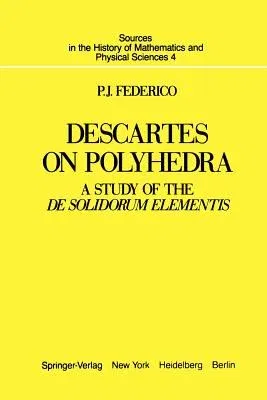P J Federico
(Author)Descartes on Polyhedra: A Study of the de Solidorum Elementis (Softcover Reprint of the Original 1st 1982)Paperback - Softcover Reprint of the Original 1st 1982, 12 October 2011

Qty
1
Turbo
Ships in 2 - 3 days
In Stock
Free Delivery
Cash on Delivery
15 Days
Free Returns
Secure Checkout
Part of Series
Sources in the History of Mathematics and Physical Sciences
Print Length
145 pages
Language
English
Publisher
Springer
Date Published
12 Oct 2011
ISBN-10
1461257611
ISBN-13
9781461257615
Description
Product Details
Author:
Book Edition:
Softcover Reprint of the Original 1st 1982
Book Format:
Paperback
Country of Origin:
NL
Date Published:
12 October 2011
Dimensions:
23.39 x
15.6 x
0.86 cm
ISBN-10:
1461257611
ISBN-13:
9781461257615
Language:
English
Location:
New York, NY
Pages:
145
Publisher:
Weight:
231.33 gm

